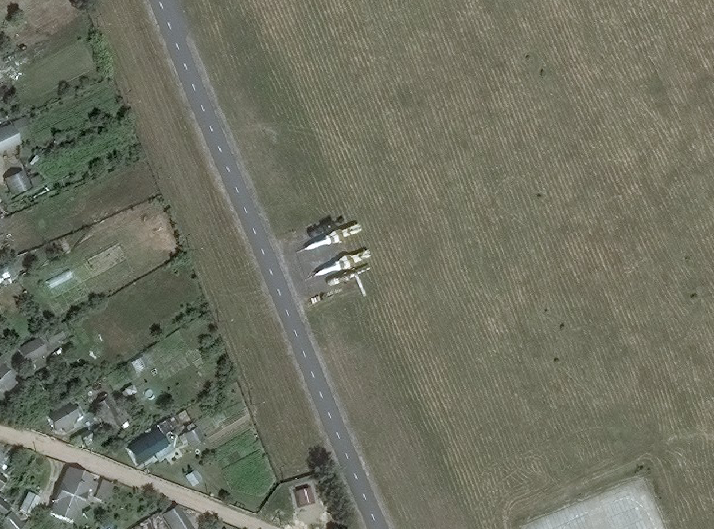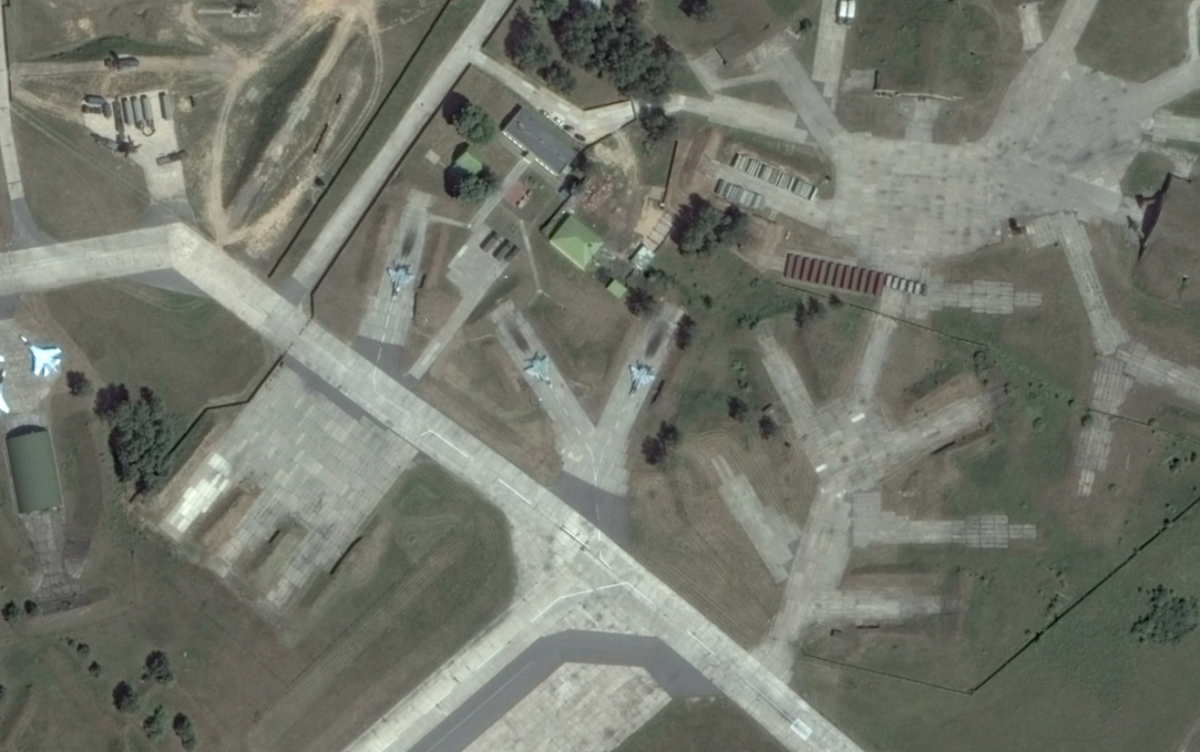Angola Takes Delivery of Four Su-30KN

Skysat imagery acquired on 20OCT2018 shows two Su-30KN parked at Lubango.
Four Su-30 multi-role fighters have been delivered to Angola as of October 2018, as confirmed by satellite imagery. The aircraft are part of a $1 billion deal for 12 airframes signed with Russia in 2013. Fresh satellite imagery captured the aircraft parked on the apron at the Lubango civil-military airport in the Huila province. The fighters were formerly flown by the Indian Air Force (IAF) and returned to Russia in the early 2000s after the IAF acquired the Su-30MKI variant.
Between 2010 and 2012, the Su-30 fighters were transferred to neighboring Belarus, where they were recently modernized to the ‘KN’ standard at the 558 Aircraft Repair Plant (ARZ). Planet Labs imagery of the 558 Plant still shows eight remaining Angolan fighters parked at the plant in Baranovichi. They can be identified by their unique green and yellow camo pattern. However, one of the airframes observed in Angola features a different camo pattern—a grey paint scheme—than the rest of the aircraft in the order.

Skysat imagery acquired in September 2018 show the eight remaining Su-30KN in the Angolan order.
Media reports appearing last September said that deliveries would be completed by ‘early 2018’. The ongoing delay suggests there could be an issue with the order. Angola, highly dependent on oil rents as a source of fiscal revenue and foreign exchange, may have encountered difficulties paying for the aircraft (oil accounts for over 70 percent of government revenue and over 95 percent of the country’s exports). Data provided by OPEC and published through the IMF show a continued drop in oil production, falling below the OPEC quota in late 2017. Moreover, the economic situation worsened around the scheduled time of delivery as the currency was devalued by 56.7 percent (in relation to the US dollar) between Q1 and Q2. The new government elected in September 2017 began economic reforms which, inter alia, included a move toward a floating exchange rate.
Bottom Line
More than half of the Angolan order remains in Belarus as of October 2018, likely due to budgetary constraints.
This post was originally published at Offiziere.ch.


